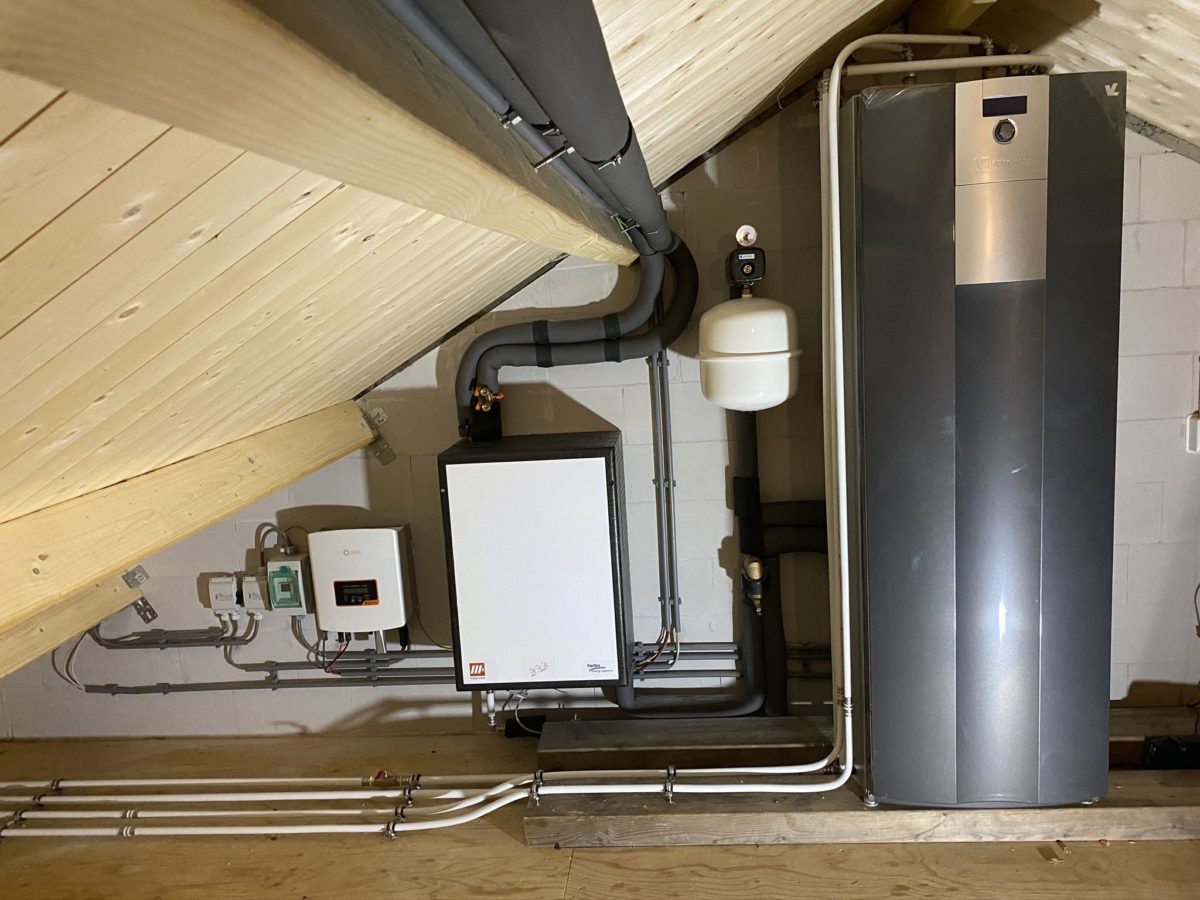A consortium of scientists and companies led by the Delft University of Technology (TU Delft) has demonstrated the technical and economical feasibility of solar-powered heating of buildings in a given neighborhood, without the need for an external heat source.
Their concept was tested in the district of Ramplaankwartier in Overveen, a town in North Holland. The district consists mainly of semi-detached houses and terraced houses and is also known as The Green Village.
The proposed solar heating network is based on photovoltaic-thermal (PVT) solar systems that can generate both heat and electricity on the roof, a very-low-temperature heat network linked to heat or cold storage under the ground, and the use of heat pumps.
The network, which is also equipped with a box with pipes, pumps, and valves to ensure that the heat from the heat network and the PVT array is optimally used, is able to store all surplus heat from the latter in the underground storage during the summer. In the intermediate seasons, the heat is supplied by the PVT panels as well as by the heat-cold storage while, in winter, the heat is mainly supplied from the heat-cold storage.
Popular content
Through this pilot project, the research group was able to determine the exact required amount of PVT panels, as well as the required temperature levels for heat storage and heat distribution. “In addition, it was tested how all units can function stably together,” it further explained. The preferred configuration for the chosen district was six panels per house, with a heat demand of approximately 10,000 kWh per year.
The scientists concluded that the system is technically and economically feasible and that the houses in the district are supplied with enough heat all year round, without the need for gas supply. “The electricity generated from the panels is sufficient for the heat pump to function,” they added. “The system is, therefore, energy-neutral for heat supply.”
The solar thermal network is defined as an interesting economical solution when there is sufficient participation from the neighborhood, and financing is provided at a low-interest rate. An investment in this kind of network may require a significant sum at the beginning but, once the systems are deployed, there are no more variable energy costs. “As a result, after a few years, the solar heating network is cheaper than gas and most other alternatives,” the consortium said. “The annual costs then only consist of maintenance and repayment of the investment made.”
This content is protected by copyright and may not be reused. If you want to cooperate with us and would like to reuse some of our content, please contact: editors@pv-magazine.com.



1 comment
By submitting this form you agree to pv magazine using your data for the purposes of publishing your comment.
Your personal data will only be disclosed or otherwise transmitted to third parties for the purposes of spam filtering or if this is necessary for technical maintenance of the website. Any other transfer to third parties will not take place unless this is justified on the basis of applicable data protection regulations or if pv magazine is legally obliged to do so.
You may revoke this consent at any time with effect for the future, in which case your personal data will be deleted immediately. Otherwise, your data will be deleted if pv magazine has processed your request or the purpose of data storage is fulfilled.
Further information on data privacy can be found in our Data Protection Policy.